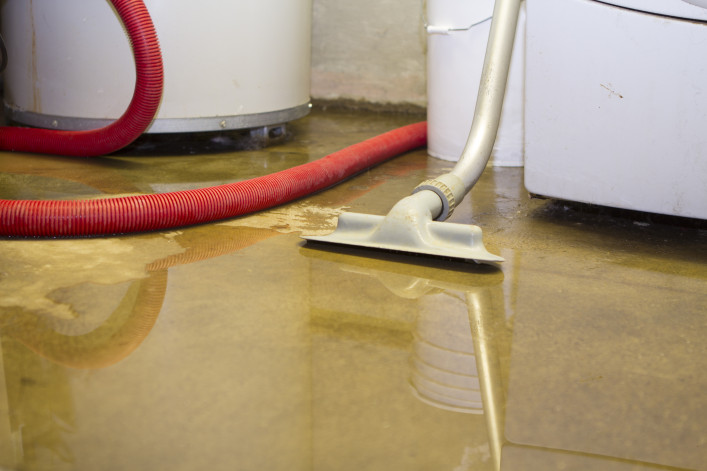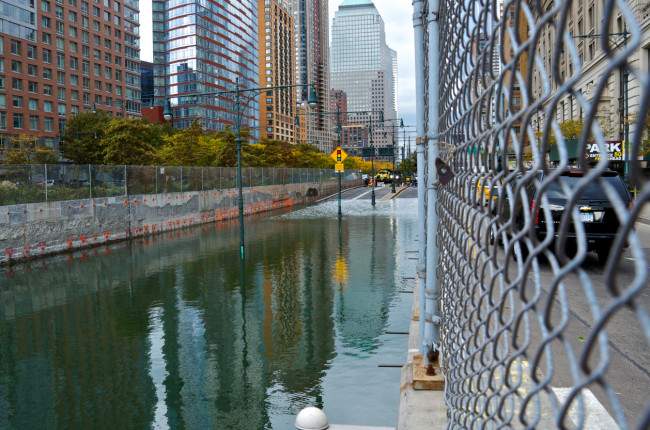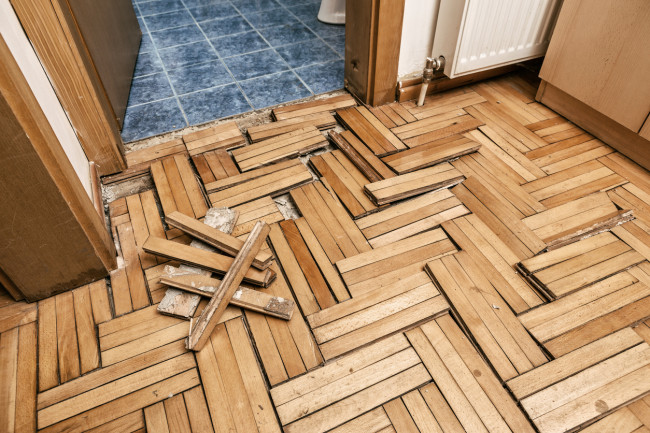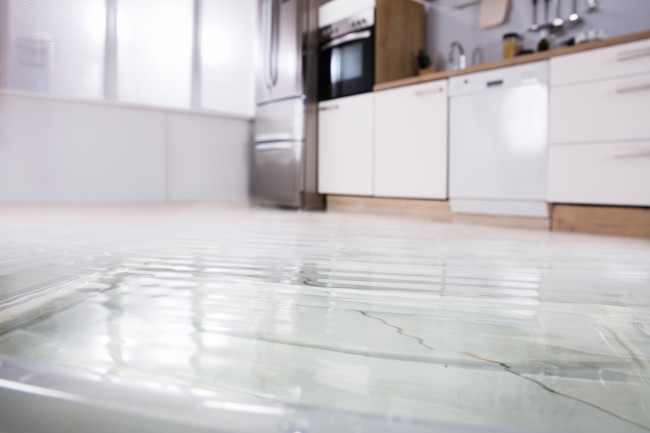Will insurance cover clean up costs and damages after a flood caused by an underground river?
- Separate flood coverage is generally available from FEMA or private carriers
- FEMA covers condos for $250,000 per unit; co-ops are limited to $500,000 per building
- To ensure coverage, you need to hire a professional company to do the cleanup

Standard insurance policies do not generally cover floods.
youngvet via Getty Images
This being New York City, the answer to any question of insurance coverage is multi-faceted—there's simply no one-size-fits-all policy that covers all buildings and property types.
Here to help Brick unpack the key data points is Brian C. Evans, president and CEO of Eastern Public, a NYC-based insurance claims and risk management firm specializing in consumer representation for large and luxury property insurance claims. (He is also chairman of the professional education committee for the National Association of Public Insurance Adjusters/NAPIA, which promotes public adjuster education and a high standard of professional conduct and ethics on behalf of consumers.)
[Editor's note: This is part three of a three-part series. Part one addresses how to find out if your building sits on top of an underground stream. Part two discusses the solutions for managing or preventing flooding from underground sources.]
Separate insurance is usually required
"Your first step is to determine if you are covered for flooding," Evans says. Generally speaking, most property damage that results from groundwater (or water that originates outside of the structure) is going to be excluded from standard property insurance policies. Instead, these types of losses would be insured under a separate flood insurance policy, typically administered by FEMA. However, this type of insurance is only available to buildings located in flood zones, and many underground rivers are not in these designated zones—"some are, but some aren't."
Note that if your building is in a high-risk flood zone, you are required to obtain flood insurance through FEMA. Same for if your building is financed by a federally backed mortgage, even if you are in a low-risk zone.
What if your building is not in a flood zone? Evans says your only option is to try and get flood insurance from a private insurance company, or to seek out specialty insurance programs and such things as "manuscript policies" where the insurer can write its own terms, "though these are extraordinarily expensive. But if you are a high-net-worth property owner in an area that falls within this coverage gap, you could seek out an insurance broker or agent to find these programs."
Policy amounts differ for co-ops vs. condos
Condos and co-ops need a special FEMA flood policy called a Residential Condominium Building Association Policy (RCBAP). "FEMA is very comfortable with condos, but the most coverage they will write is $250,000 per unit, which also has to pay for common areas and the exterior," says Jeff Schneider, president of Gotham Brokerage. What's more, it covers structural components, not contents. You can always get higher limits on the private market, but he says FEMA is typically the best and most affordable option.
FEMA is less comfortable with the shareholder structure of co-ops and will only provide total coverage of $500,000 for the building. "That might be fine for a smaller building with four to 12 units, but a larger co-op will want to look at the situation more closely and consider getting a policy from a private insurer—including having flood insurance as part of a comprehensive co-op package," he says. Again, this will usually be more expensive than a FEMA policy.
(Note, too, that brownstones and single- or multi-family houses are subject to this kind of flooding, in which case FEMA caps coverage at $250,000 per residence.)
Many condo and co-op boards opt not to purchase flood insurance unless required. Yet according to FEMA, 25 percent of all flood insurance claims occur in areas that are considered low-risk flood zones—and in the wake of more extreme weather events.
Coverage is not automatic
"Assuming you are covered under a flood or specialty policy, the good news is you would ostensibly be financially indemnified by the provider—but that will be conditional," Evans says. He emphasizes your responsibility under the contract to ensure your claim is covered in that water damage must be mitigated as quickly as possible to reduce the amount of secondary damages to the structure. (Per FEMA, just one inch of water can cause $25,000 in damages.)
In his experience, what often happens is property owners are worried about incurring costs that might not be reimbursed and delay filing the claim or doing any kind of cleanup until the carrier investigates the situation and confirms that it's a covered event. This is especially true given restoration companies like SERVPRO or Service Master will not be able to give you a bid before getting to work—there's just no time for that.
"This is a catastrophic mistake that many policyholders make because studies show that every dollar spent on mitigation/cleanup reduces the cost of damage repair by five to six dollars. Moving quickly to professionally mitigate your damages will save you money in the repairs and will best ensure your claim is fairly paid when coverage is available," he says. In other words, reparation is much cheaper than restoration.
Key takeways
Notify your insurance carrier asap and let them know you are going to work to clean up that water as quickly as you can—and then hire a company to do just that. "Even though you won't know what the cost of that work will be upfront, which can be a really uncomfortable position to be in, our advice is to always allow that work to proceed right away," Evans says.
And if you haven't done so already, let this be a reminder to obtain a separate policy to cover any future flooding from an underground river—or any other source such as broken water mains, an even more common culprit in NYC. Likewise, you may want to invest in systems that can prevent flooding from underground water in the first place.
You Might Also Like



























